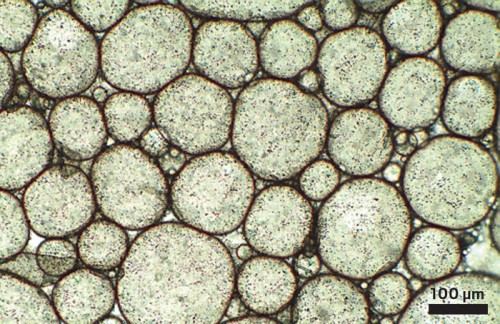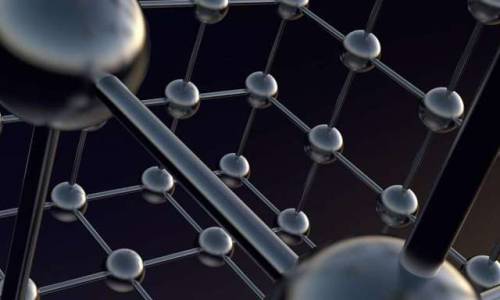#membranes
Simple logic for nanofluidic computing simulated
Invigorating the idea of computers based on fluids instead of silicon, researchers at the National Institute of Standards and Technology (NIST) have shown how computational logic operations could be performed in a liquid medium by simulating the trapping of ions (charged atoms) in graphene (a sheet of carbon atoms) floating in saline solution. The scheme might also be used in applications such as water filtration, energy storage or sensor technology.
The idea of using a liquid medium for computing has been around for decades, and various approaches have been proposed. Among its potential advantages, this approach would require very little material and its soft components could conform to custom shapes in, for example, the human body.
NIST’s ion-based transistor and logic operations are simpler in concept than earlier proposals. The new simulations show that a special film immersed in liquid can act like a solid silicon-based semiconductor. For example, the material can act like a transistor, the switch that carries out digital logic operations in a computer. The film can be switched on and off by tuning voltage levels like those induced by salt concentrations in biological systems.
Post link
MOF emulsion
Reverse osmosis is used worldwide to purify drinking water. It is deployed at extremely large scales in desalination plants and is a leading technology in potable water reuse, also called toilet-to-tap—a nickname that annoys scientists and engineers working on potable water reuse. Though existing reverse osmosis membranes remove salt and most contaminants, a few slip through, such as boron and N-nitrosodimethylamine (NDMA), a toxic byproduct of the chlorination used upstream to kill pathogens. To make a better membrane, a team from China’s State Key Laboratory of Pollution Control and Resource Reuse, the University of Hong Kong, and Vanderbilt University used nanoflakes of an amphiphilic metal-organic framework (MOF) to create a next-generation polyamide membrane. The MOF flakes line up on the interface between the water and hexane emulsion where amide polymerization takes places, regulating the heat and mass transfer associated with the reaction. In this microscope image, the researchers whipped the mixture into an emulsion to probe how the MOFs behave at the interface. The final result is a thin, crumpled membrane material that outperforms conventional membranes in removing salt, boron, and NDMA. —Craig Bettenhausen
Credit: Zhiwei Wang, Shihong Lin, Sci. Adv.2022,10.1126/sciadv.abm4149
Do science. Take pictures. Win money. Enter our photo contest here.
Post link
Properties of strained graphene and other strained two-dimensional atomic materials
Salvador Barazza-Lopez, associate professor of physics at the University of Arkansas, is part of a team that published a review article on the properties of strained graphene and other strained two-dimensional atomic materials in the prestigious Reports of Progress in Physics, a review-style journal published by the Institute of Physics in the United Kingdom that has a large impact factor of 14.3.
Materials that are atomically thin can be thought as membranes. Membranes bend to adapt to other materials, and change their properties when pulled from two opposite edges. Electronic and optical properties of atomically-thin membranes are modified as a result of bending and stretching, and the 62-page published article provides a detailed descriptions of these effects.
“This comprehensive project was led by Gerardo G. Naumis at the Institute of Physics National University of Mexico, and it took about one year to be completed.” Barraza-Lopez said. “Besides giving me the opportunity to summarized work performed at Arkansas over the last six years, the two weeks spent working at the Institute were memorable.” Continued access to the Trestles supercomputer at the Arkansas High Performance Computing Center was crucial for completing many of these studies.
Post link
A research team from the Georgia Institute of Technology and ExxonMobil has demonstrated a new carbon-based molecular sieve membrane that could dramatically reduce the energy required to separate a class of hydrocarbon molecules known as alkyl aromatics. The new material is based on polymer…




